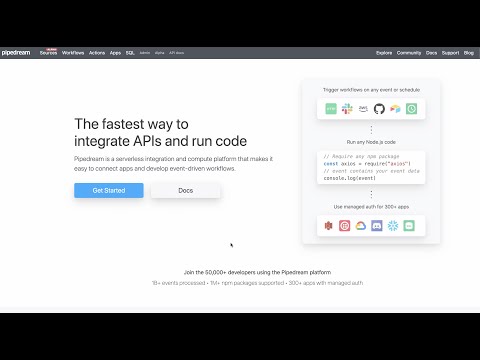What do you want to automate
with Pingdom and PagerDuty?
Prompt, edit and deploy AI agents that connect to Pingdom, PagerDuty and 3,000+ other apps in seconds.
Trusted by 1,000,000+ developers from startups to Fortune 500 companies
Popular Pingdom and PagerDuty Triggers#
Emit new event when a new check is added in Pingdom. See the documentation
Emit new event each time a new user rotates onto an on-call rotation
Emit new event each time an incident is created or updated
Popular Pingdom and PagerDuty Actions#
Overview of Pingdom#
The Pingdom API offers a suite of endpoints to monitor the uptime, performance, and interactions for websites and web applications. With this API, you can automate the retrieval of monitor statuses, alerts, and performance data. Integrating Pingdom with Pipedream allows developers to create custom workflows that can notify teams of incidents, track performance metrics, or even trigger actions based on website status changes.
Connect Pingdom#
import { axios } from "@pipedream/platform"
export default defineComponent({
props: {
pingdom: {
type: "app",
app: "pingdom",
}
},
async run({steps, $}) {
return await axios($, {
url: `https://api.pingdom.com/api/3.1/checks`,
headers: {
"Authorization": `Bearer ${this.pingdom.$auth.api_token}`,
},
})
},
})
Overview of PagerDuty#
The PagerDuty API offers a powerful interface to automate your digital operations management. By leveraging its capabilities on Pipedream, you can create workflows that respond to incidents, automate alerts, and synchronize incident data across various platforms. PagerDuty's API enables you to manage services, teams, and incidents, ensuring that your systems remain operational and that the right people are notified at the right time.
Connect PagerDuty#
import { axios } from "@pipedream/platform"
export default defineComponent({
props: {
pagerduty: {
type: "app",
app: "pagerduty",
}
},
async run({steps, $}) {
return await axios($, {
url: `https://api.pagerduty.com/users/me`,
headers: {
Authorization: `Bearer ${this.pagerduty.$auth.oauth_access_token}`,
"Accept": `application/vnd.pagerduty+json;version=2`,
},
})
},
})
Related Videos#
